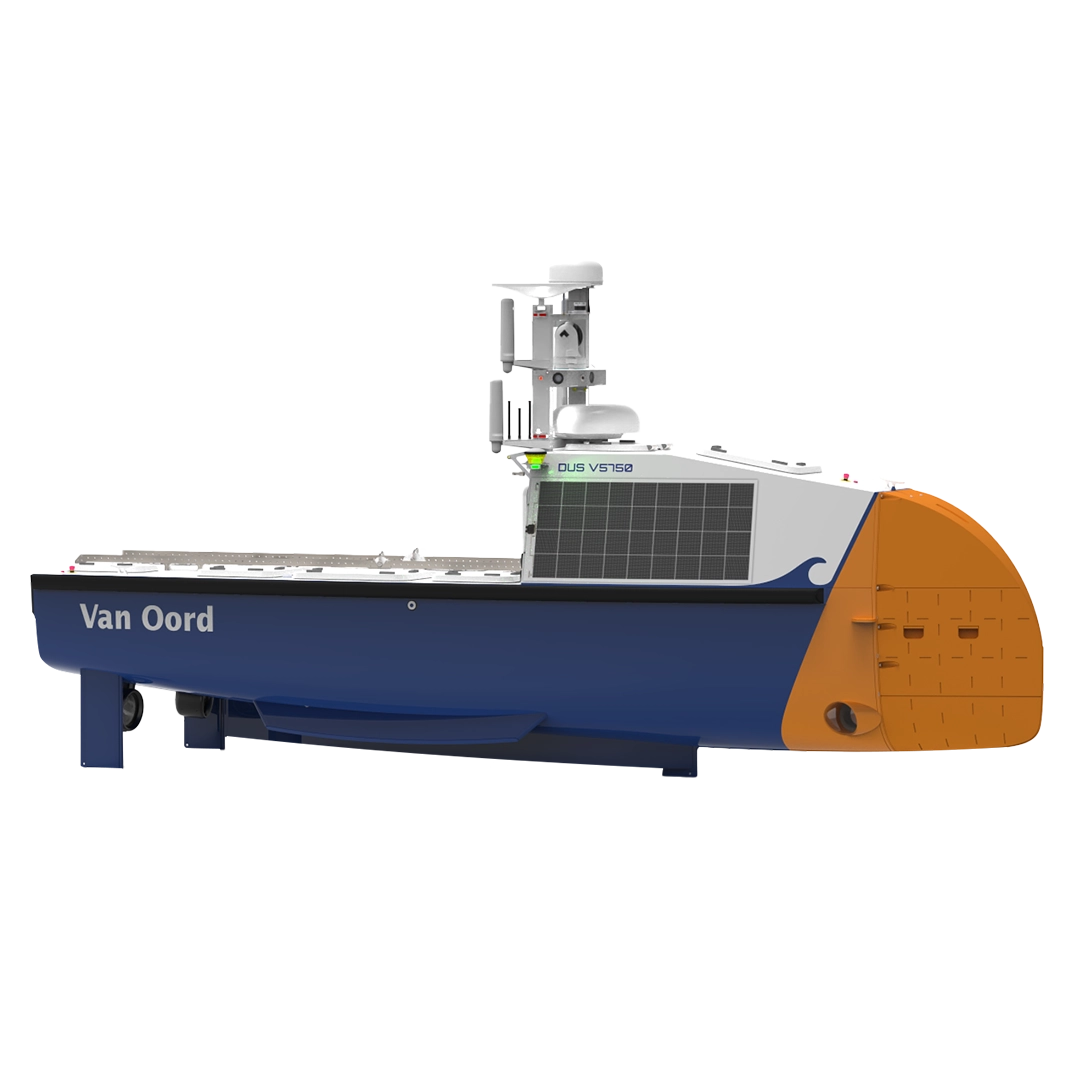Demcon unmanned case
V5750 Van Oord

The Challenge
Maritime contractor Van Oord, a leader in the industry, was facing the challenge of modernizing its survey and inspection activities. Traditional methods using manned vessels were becoming less efficient, costly, and environmentally unsustainable. As the industry shifted towards digitalization, sustainability, and safety, Van Oord recognized the need for autonomous survey solutions that could address these challenges.
The solution
To meet these challenges, Van Oord partnered with Demcon uncrewed Systems (DUS). DUS had already provided Van Oord with electrically powered survey vessels for hydrographical inspections on inland waters. Building on this successful collaboration, Van Oord ordered a larger uncrewed, autonomous offshore vessel designed to operate in challenging offshore conditions and conduct weekslong survey operations at sea.
The Approach
The newly ordered vessel, referred to as the DUS V5750 model, is substantially larger than its predecessors, measuring 7 meters in length. It is designed to support various maritime operations, including dredging, offshore windfarm installation, and maritime infrastructure projects. The vessel incorporates amongst others Demcon Unmanned Systems standardized and modular autonomous navigation system, and the vessel’s hull, power, and propulsion are designed and tailored to the operational needs to meet Van Oord’s specific performance criteria.
One notable feature of this vessel is a new functionality of the innovative Dynamic Positioning system, developed to address a specific survey application. One of Van Oord’s tasks in their offshore wind activities is an efficient inspecting (“touchdown monitoring”) of cables being laid to and from offshore assets. Traditional methods involved a larger manned survey vessel slowly following a cable-laying vessel, a process that could be costly and challenging in varying weather conditions.
To overcome this challenge, DUS has developed an environment-dependent control mode for the Dynamic Positioning system. This system ensures that the vessel’s nose is pointed in the direction in the highest disturbance of wind, currents, and waves, thereby minimizing resistance and allowing the vessel to follow the cable-laying vessel in a lateral position. While this may appear as an unconventional sailing angle, it is a far more power-efficient approach facilitated by Demcon’s innovative Dynamic Positioning system.
Benefits and Results
Van Oord’s transition to electric uncrewed vessels has yielded significant benefits. These benefits include:
Sustainability
The electric uncrewed vessels contribute to a more sustainable approach to survey and inspection activities by reducing emissions and minimizing environmental impact, especially in sensitive areas.
Cost Efficiency
The autonomous vessels enable cost-efficient survey operations, reducing the need for on-site manpower and optimizing logistics and resource allocation.
Safety
By eliminating the need for surveyors and other employees to be physically present on vessels, the uncrewed vessels enhance safety by allowing experts to engage remotely when necessary.
Conclusion
The partnership between Van Oord and DUS exemplifies the successful transition from traditional survey and inspection methods to modern, autonomous solutions. By embracing electric uncrewed vessels, Van Oord has not only improved the efficiency of its operations but has also contributed to a more sustainable and safer maritime industry.
For further insights and inquiries about the innovative technologies and solutions offered by Demcon Unmanned Systems, please feel free to contact us directly. We will be delighted to provide you with a deeper understanding of our cutting-edge solutions and how they can address your specific maritime needs.
